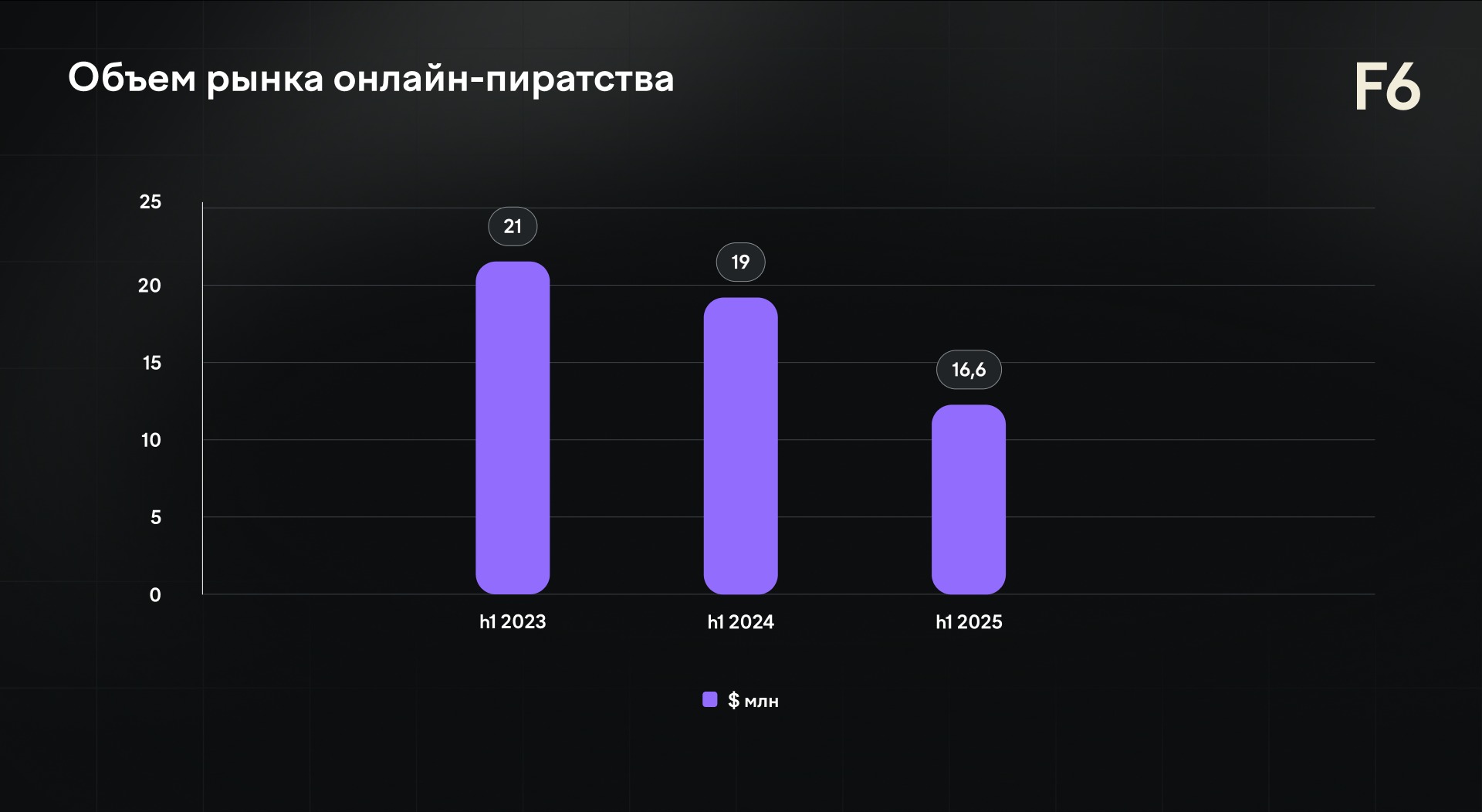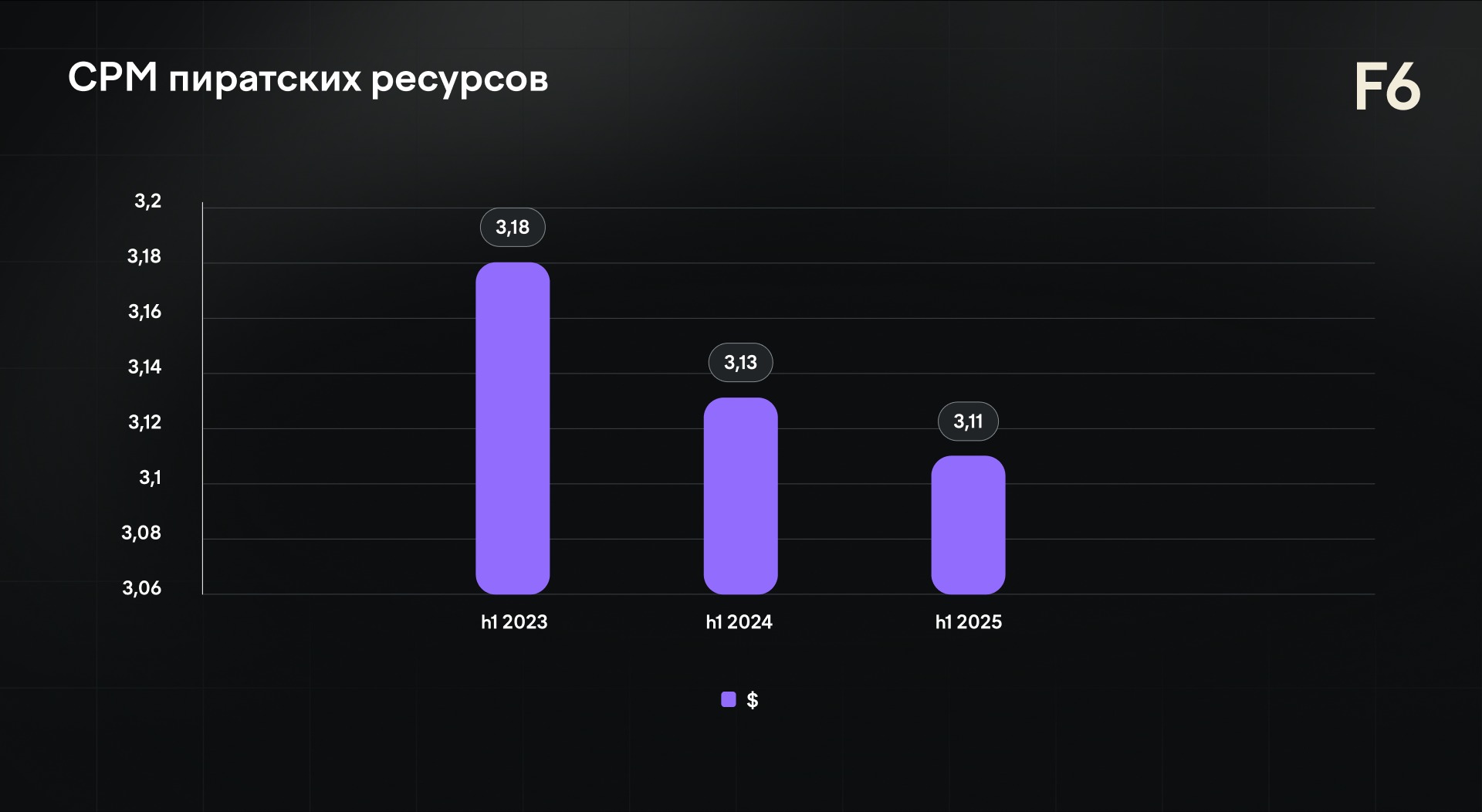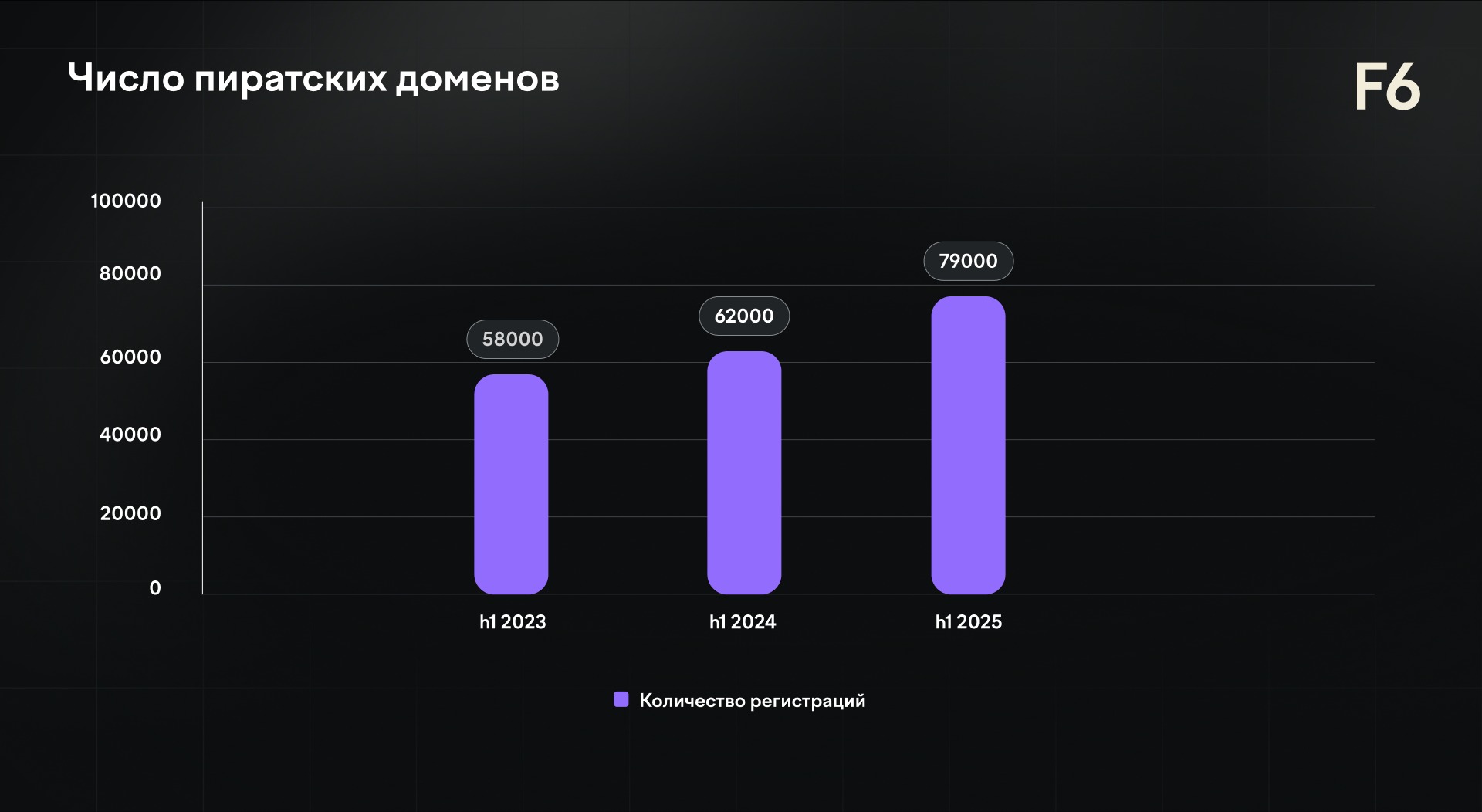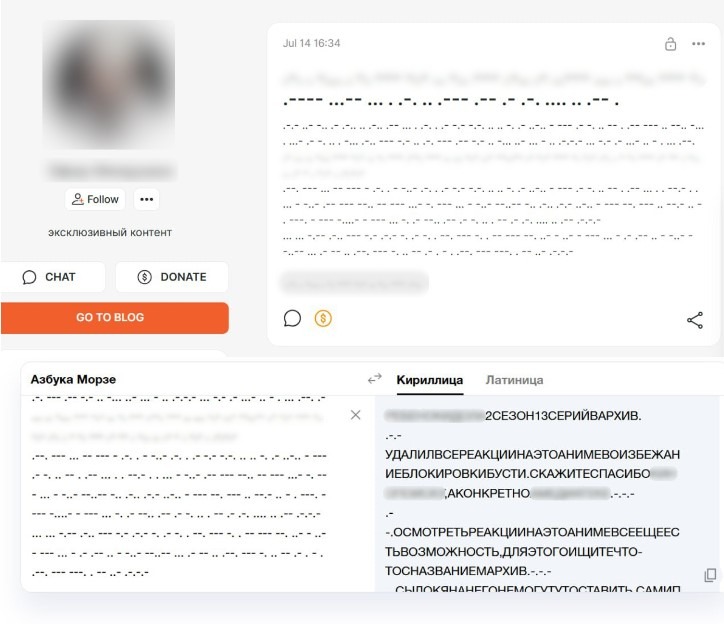Experts at F6 reported that in the first half of 2025, revenues of illegal video content distributors fell by 14.5% compared to last year (to $16.6 million) and by 26.5% compared to the same period in 2023. At the same time, the successful blocking of pirate resources led to a 27.4% increase in the registration of such domains—to 79,000.

The downward trend in piracy revenues has persisted for six years. Researchers explain that pirates’ revenue is affected by the number of users interested in watching pirated content, the CPM (Cost Per Mille, the price per 1,000 impressions in an ad campaign), and the effectiveness of rightsholders’ efforts to combat copyright infringement.
Search query traffic to pirate sites fell by 13.9% compared to the first half of last year. This is due to the growing number of users of legal streaming platforms, as well as intensified efforts against pirate resources: illegal content is being detected and blocked faster.
Payments for showing ads to visitors are also decreasing. Last year, the payout rate for ads on pirate resources remained roughly the same, but it has started to decline again. In the first half of the year, the average CPM was $3.11—0.6% and 2.2% lower than in the same period of 2024 and 2023, respectively.

In response to the successful blocking of pirate-site mirrors, distributors of illegal content are being forced to register more domains for new mirrors. In the first half of 2025, 79,000 domains were created—27.4% more than in the same period last year. It is noted that the number of pirate sites has been growing for the third year in a row.

The sharp increase in new domain registrations also affected the distribution of platforms used to host pirated content. As a result, the share of links to pirate sites, compared to other sources of illegal video distribution, rose to 98.4% in 2025. Meanwhile, the share of other platforms (social networks, messengers, and video-hosting services) shrank to a combined 1.6%, whereas as recently as 2023 they accounted for 12.1%.
Since there is an ongoing fight against pirate resources, malicious actors regularly develop new tactics designed to slow down rights holders’ detection and blocking of pirated content. In their report, the researchers list several interesting examples.
- Link structure. Typically, the path to the page for the desired movie or series is based on the title written in Latin characters. But now some pirates rename the path to arbitrary letters and numbers. In some cases, the path is implemented as a third-level domain (subdomain).
- Domains that sound like well-known brands. Specialists noticed the registration of a series of pirate domains whose names sounded similar to a popular Russian search website. It is assumed this was done to pass themselves off as a legitimate domain in order to reduce suspicion of pirating activity.
- Obfuscating ad text for pirated films. Some showed ingenuity by trying to make content harder to detect — they published descriptions and movie titles in Morse code.

“The pirate business is still staying confidently afloat; demand for illegal content remains significant, especially after the departure of foreign streaming platforms. The increase in the number of pirate sites is an expected reaction by distributors of illegal content to rightsholders’ successful protection of their intellectual property,” comments Stanislav Goncharov, head of the Digital Risk Protection department at F6.
